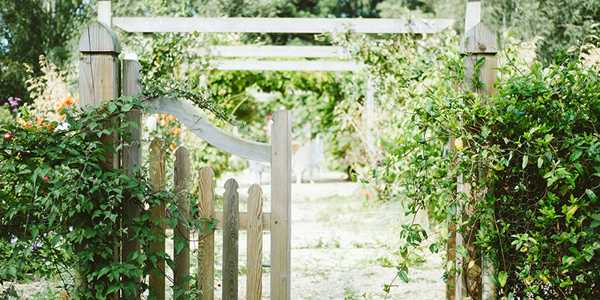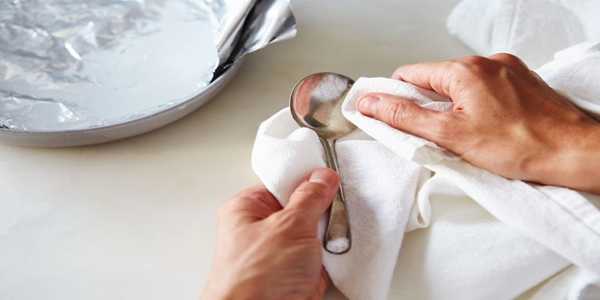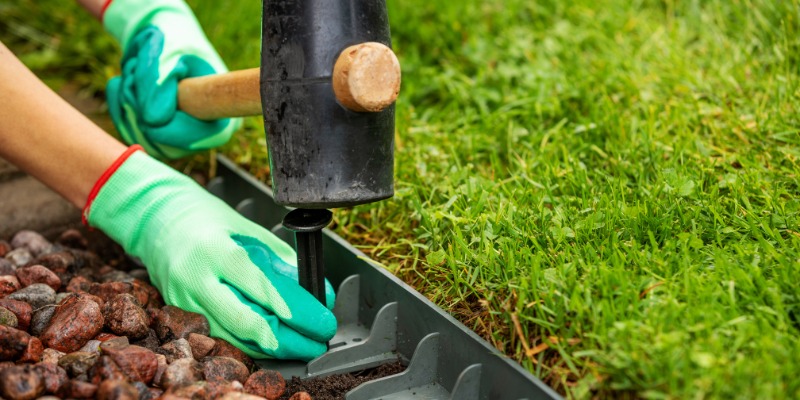How to Cook Snow Peas: Quick and Easy Recipes for a Healthy Side
Snow peas, with their crisp, flat pods and sweet peas, add a delightful crunch to dishes. Packed with vitamins A, C, K, and fiber, they support digestion and overall health. With the right cooking technique, you’ll preserve their perfect snap and fresh flavor.
Preparing Snow Peas for Cooking
Selecting fresh snow peas is key to elevating your culinary dishes. Look for firm, bright green pods when shopping, ensuring they are crisp to the touch. Avoid any that appear yellow, limp, or show signs of brown spots, as these indicate poor quality or aging.
After selecting your peas, proper washing is necessary to remove any dirt or residues. Begin by rinsing the snow peas under cool running water. For added cleanliness, you can soak them briefly in a bowl of water, which can help dislodge any stubborn debris.
To prepare snow peas for cooking, trim the ends carefully and remove the strings to enhance both texture and appearance. Use a sharp knife or kitchen scissors to cut off the stem end and the pointed tip of each pea. Gently grasp the tough string along the seam of the pod and pull it down towards the pointed end to remove it completely. This simple step significantly improves the visual appeal and eating experience of your dishes.
Snow peas can be enjoyed raw for their sweet, crisp flavor or cooked to achieve a tender, somewhat mellow taste.
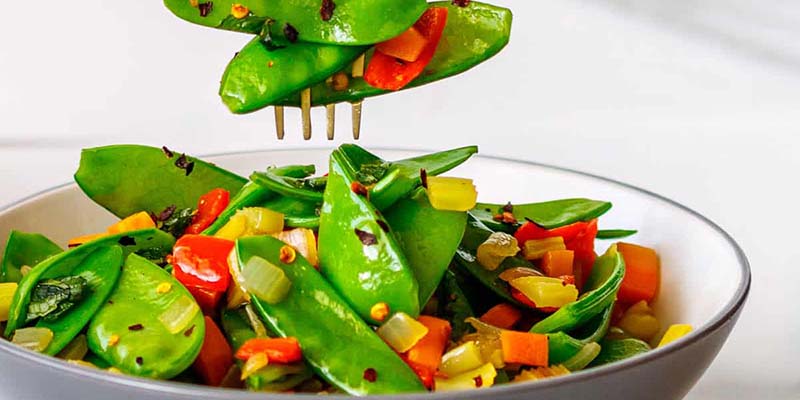
Cooking Methods of Snow Peas
Steaming
Steaming snow peas stands out as a fantastic method to maintain their vibrant color and crisp texture while preserving essential nutrients. The health benefits of steaming are numerous, including low fat and calorie intake coupled with the enhancement of their natural sweetness. To properly steam snow peas, follow these straightforward steps:
1. Rinse the snow peas under cold water to eliminate any dirt.
2. Trim the ends if needed.
3. Bring a pot of water to a rolling boil.
4. Place the snow peas in a steaming basket or colander positioned above the boiling water.
5. Cover the pot with a lid, and steam for 2-3 minutes until they turn bright green and crisp-tender.
6. Promptly remove them to prevent overcooking, and enjoy them immediately or incorporate them into recipes.
Sautéing
Quick sautéing is a superb method for cooking snow peas while ensuring they retain their crunch and freshness. Moreover, this technique allows for the infusion of additional flavors, making it a versatile option. Here’s how to sauté snow peas effectively:
1. Heat a tablespoon of oil in a skillet over medium-high heat.
2. Add the snow peas and stir-fry for approximately 2 minutes.
3. For a flavorful enhancement, add garlic or ginger during the last 30 seconds of cooking.
4. Season with salt and pepper to taste, then serve immediately. This method not only preserves their crispness but elevates the flavor profile, making sautéed snow peas a delightful side dish.
Stir-frying
Incorporating snow peas into stir-fry dishes requires proper timing and balance. To achieve optimal results, add them during the last few minutes of cooking, ensuring their crunchiness remains intact. Begin by slicing other vegetables, such as bell peppers or carrots, then sauté these first until just tender. Afterward, add the snow peas and stir-fry for an additional 2-3 minutes. Enhance the flavors by incorporating sauces like soy sauce or teriyaki in the final moments of cooking, which will complement without overshadowing the freshness of the peas.
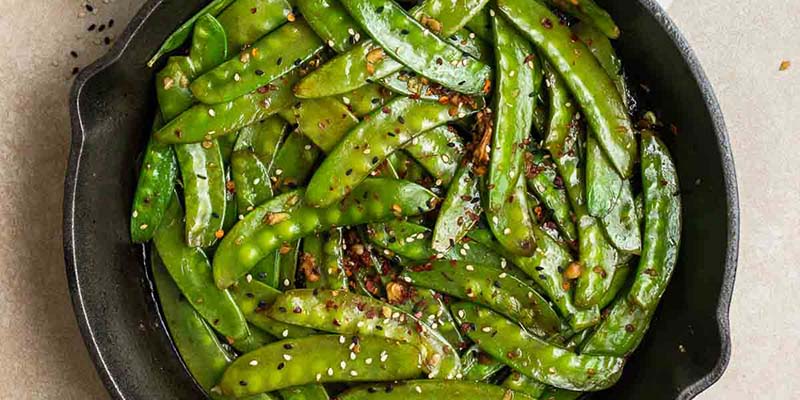
Blanching
Blanching snow peas is a cooking technique designed to preserve their brilliant green color and crisp texture. This method entails briefly boiling the peas, followed by transferring them to an ice water bath to halt the cooking process. Here’s the proper technique to blanch snow peas:
1. Prepare a pot of boiling water and a bowl filled with ice water.
2. Submerge the snow peas in boiling water for 1-2 minutes.
3. Swiftly transfer them to the ice water, allowing them to cool for an equivalent time.
4. Drain and pat dry to maintain their quality for salads or cold dishes.
Roasting
Roasting snow peas brings out a distinct, slightly caramelized flavor that beautifully contrasts their inherent sweetness. This cooking method can enhance a variety of meals, delivering a deeper flavor profile. To roast snow peas:
1. Preheat your oven to 425°F (220°C).
2. Toss the snow peas in a mixing bowl with olive oil, salt, and your preferred spices, such as garlic powder or paprika.
3. Spread the peas in a single layer on a baking sheet.
4. Roast for around 15 minutes, flipping them halfway through, until they are tender and lightly browned.
5. Serve hot as a flavorful side dish or snack.
Popular Dishes Featuring Snow Peas
The crunchy texture and vibrant flavor of snow peas make them incredibly versatile across various cuisines. They shine in fresh salads, where their crispness complements mixed greens, cherry tomatoes, and tangy vinaigrettes. For a heartier option, try a quick stir-fry featuring shrimp, bell peppers, and a flavorful garlic-soy sauce. Snow peas can also be a simple side dish, expertly steamed and garnished with a sprinkle of salt and a squeeze of lemon juice. Their adaptability ensures they will enhance countless meals while delivering a refreshing burst.
Storing Leftovers
To maintain the freshness of cooked snow peas, store them in an airtight container in the refrigerator for up to three days. If you wish to keep them longer, consider freezing them for up to six months, keeping in mind to blanch them beforehand, which helps retain their vibrant color and nutritious quality.

